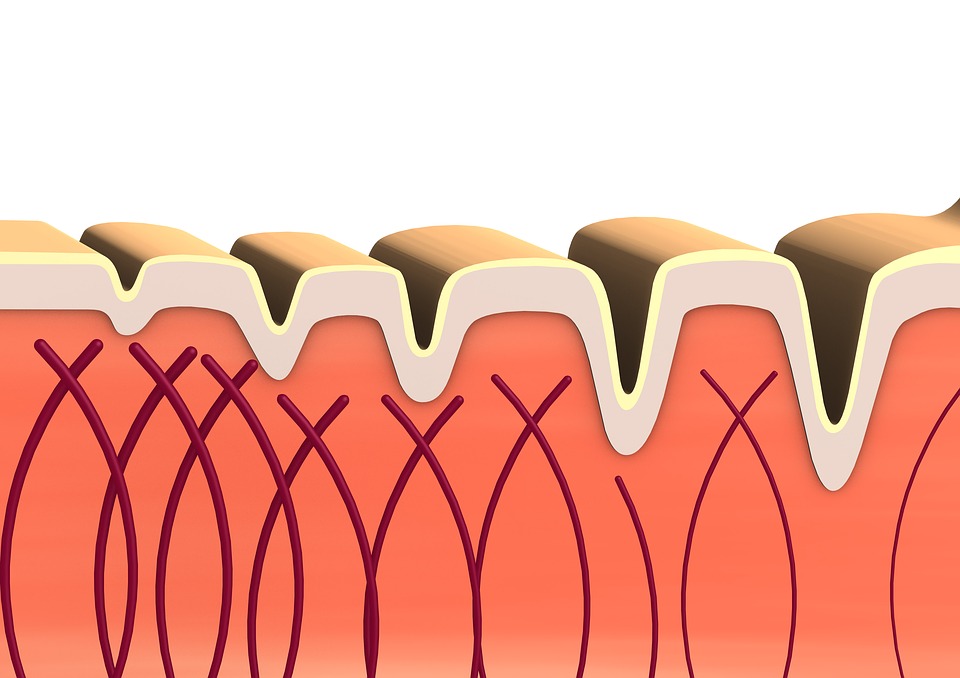
As we age, our skin gets a little ‘lazy’ and collagen production slows down. There are various regenerative treatments available that can stimulate the dermis to boost collagen. Two of our most popular regenerative treatments at Eudelo are PRP Needling and Laser Facials.
In-clinic treatments:
PRP Needling is a combination of Medical needling and PRP (platelet rich plasma). Medical needling – or collagen induction therapy (CIT) as it’s also known – gives skin a gentle nudge to remind it to keep making fresh collagen. This is a very natural regenerative treatment that helps the skin help itself. It involves an electric needle pen equipped with multiple ultra-fine, sterile needles (after numbing cream, the procedure is painless). Medical needling creates tens of thousands of microscopically small punctures in the dermis. These intentional micro-injuries induce tiny, controlled wound-healing responses in the skin’s deeper layer. Consequently, natural growth factors are released, and fibroblasts are stimulated into synthesising new matrix tissue including collagen and elastin. In time, this will lead to a firmer, more elastic skin with a more refined skin surface appearance.
Studies confirm that needling provides both epidermal as well as dermal benefits with an increase of dermal and epidermal thickness, up-regulation of youthful collagen type 1 and significant clinical improvements. Medical needling not only rejuvenates the skin, but can also greatly improve the appearance of enlarged pores and acne or chicken pox scarring.
One of the advantages of medical needling is that we can induce positive effects deep in the dermis without stripping off the protective outer, epidermal layer of skin.
For even better results, medical needling can be combined with infusion of a growth factor containing ‘booster’ solution. This advanced form of medical needling not only stimulates the skin mechanically, but also evenly infuse it with the PRP ‘booster’ solution directly into the dermis where it’s needed most.
Generating the PRP solution to be needled into the skin involves taking a blood sample from the patient’s inner elbow. Using a specialised method and high-tech equipment we then isolate a fraction of plasma from the blood that is rich in platelets (platelet rich plasma or PRP). These platelets are an important reservoir of growth factors (GFs) which further activate collagen building cells and dermal tissue regeneration.
PRP needling is done in a course of three to six sessions at four to eight week intervals.
Another method to boost collagen production are ‘Laser facials’ There are different devices and techniques on the market. For the laser facials at EUDELO, we use fractionated Q-Switched Nd-YAG technology (Neodymium YAG). This laser emits short, yet powerful bursts of light that reach underneath the skin’s surface. Here, the light causes a photo-acoustic effect to create microscopic punctures in the dermis, which stimulates collagen and also helps fragment unwanted pigmentation in the skin.
This laser has a fractional pattern, which means the laser beam creates microscopic ‘columns’ of skin regeneration, leaving pillars between untouched which greatly lowers the risks of treatment. This laser technology is non-ablative, meaning it leaves the skin surface intact. It leads to regeneration with collagen stimulation selectively in the deep backbone of our skin, the dermis, without any downtime.
You can see the picture emerging that many regenerative treatments work by creating tiny wounds in the skin that trigger repair and remodelling. Our laser’s mechanism of action for example is somewhat similar to medical needling, abeit without puncturing the skin’s surface.
A course of six Laser Facials at two-week intervals will give the best results.
Skincare:
In addition to regenerative in-clinic treatments, homecare can nicely support collagen production. One of the best known topical ingredient groups to stimulate collagen are retinoids. Retinoid is the family name for all vitamin A derivatives, both prescription versions such as tretinoin and adapalene, as well as over-the-counter compounds such as retinol and retinaldehyde.
Both retinol and retinaldehyde are highly effective over-the-counter alternatives to tretinoin and I often recommend them to patients. They support collagen production, reduce sun damage, lighten pigmentation and soften lines and wrinkles. However, they can irritate, so should be introduced gradually and only used as tolerated. Everyone is different and some people might just tolerate them twice a week or so, preferably in the evening, which is fine.
Supplements:
When patients have regenerative treatments in clinic, we often also combine them with a high-grade bovine collagen supplement. Collagen supplements have become something of a trend and I admit I was sceptical about them at first. But recent clinical evidence has made me change my mind. So how do they work?
Natural collagen is too huge a molecule to reach your skin intact after swallowing: to be absorbed by the gut, it would have to be digested into smaller units. Collagen supplements contain small collagen fragments – peptides and amino acids – which are easily absorbed by the small intestine and distributed throughout the body via the bloodstream, where they remain for up to 14 days.
And because there are suddenly unusually high amounts of collagen building blocks floating around, your skin is tricked into thinking there must be some breakdown – a major injury, perhaps. The regenerative procedure you’ve just had will reinforce this message – think of the tens of thousands of micro-wounds induced by medical needling for example. So your skin responds to both these alerts by increasing its own collagen production – conveniently using the building blocks we’ve just supplied. This collagen stimulating trigger leads to tissue remodelling, skin regeneration and ultimately a firmer, more refined-looking skin.
Personally, my preferred collagen supplements contain a superior-quality bovine collagen which is more similar to human collagen than marine types. My dose recommendation is 10g collagen per day.
Lifestyle:
Certain environmental factors such as sun exposure will hasten collagen breakdown, so it’s important to avoid excessive sun exposure and protect our skin with an SPF 30-50 each day.
We also know that oxidative stress can lower collagen content in the skin. Oxidative stress can be caused by various environmental influences such as stress, sleep loss, smoking and bad diet, so these are all factors you should try and optimise.
Topical antioxidants such as high grade vitamin C can further help protect the skin from the harmful consequences of oxidative stress by lowering free radical levels in the skin.
Whether you have a medical skin condition which needs treatment or simply want to look your very best, our specialised dermatology team will help you achieve the very best result.

